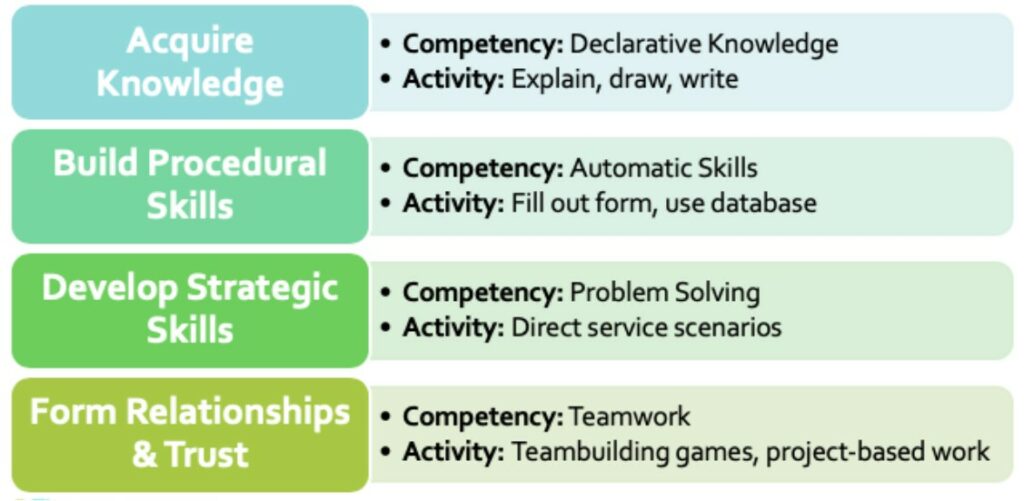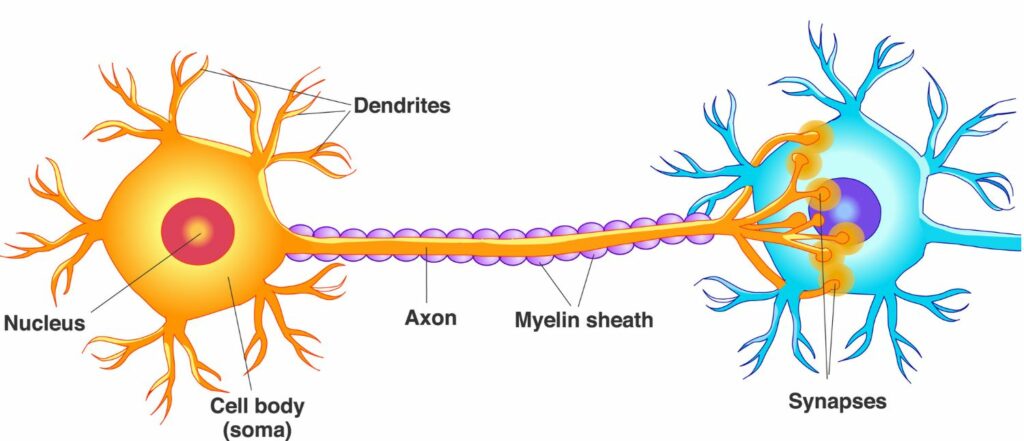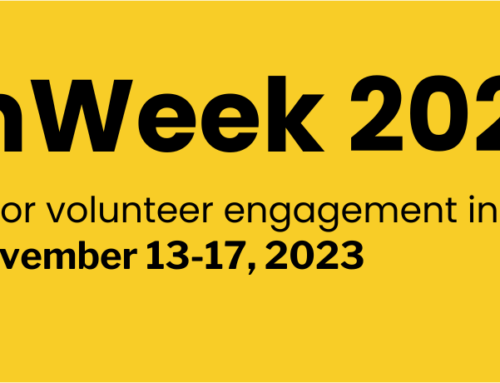Beyond Presentations – Effective Volunteer Training Ideas for Your Next Orientation
Have you ever been frustrated by the lack of traction you’re getting from your volunteer training?
It can sometimes feel like you’re spinning your wheels. You spend valuable time developing something that you think will work. Volunteers come and enjoy it.
But at the end of the day, they don’t learn what you’re teaching. They don’t remember where resources are, they don’t log their hours on time or correctly, they don’t follow your most important procedures.
Why is this? Is it because volunteers are lazy or unmotivated?
Nope.
Most volunteers really want to be at their best for you. It’s just that you haven’t taken the steps needed to help them actually learn the material you’re teaching.
Effective volunteer training is more than a great speaker, colorful slide decks, and collated handouts. Truly effective training requires measurable learning objectives, practice, and repetition. Unfortunately, most volunteer orientations don’t include anything but a presentation.
If this is your current model, you probably know what I’m talking about. After orientation, you see a lot of enthusiasm and buy-in, but as this tapers off you also see raw volunteers unfamiliar with their roles and unable to make full contributions to the team.
They received a lot of great general information in orientation, but not enough practical tools and skills to do the job.
The good news is that with some simple adjustments, you can change your outcomes. The tips below will help you move beyond the presentation model and gain some fresh ideas for engaging and effective volunteer training to build a skilled volunteer team.
Effective Training Starts with Learning Objectives
Learning objectives are the critical foundation of any effective volunteer training or orientation. Learning objectives help you focus your content on “need to know” information and leave behind unnecessary content that doesn’t help you (or your learner) meet clear, focused goals.
A learning objective is not helpful if it does not represent a behavior-based skill, and a simple presentation with general information about your organization doesn’t include any measurable skills for your participants. Instead, try including some action-based learning objectives, meaning 1) that they are a reasonable task that the volunteer is expected to perform on a regular basis, and 2) they can be observed.
For example, if part of your orientation is presenting the organization’s mission statement, you could add a learning objective that “participants effectively communicate the mission statement with another person.” This is both a measurable action step and a clear application of that information in a real-world scenario.
A simple way to pinpoint your learning objectives is to brainstorm answers to the following three questions.
At the end of the training …
- What will your learners be able to do?
- What learning (knowledge or skill) gap(s) will be filled?
- What behavior change will be brought about?
To further flesh out your goals, consider the following four levels of competency you need to develop a more effective volunteer training program. Each competency below also includes examples of training activities that support each competency.
Volunteer Training Goals and Competencies
Once you have your preliminary list of training goals, you can begin to refine them into specific learning objectives. The total number of objectives you identify depends on the length and complexity of the material to be taught.
As a general rule, you should aim for no more than three learning objectives for every one hour of instruction.
Not sure how your current training measures up? Try our free, amazingly simple Volunteer Training Evaluation Worksheet HERE>>
Effective Training Through Repetition and Practice
Once you’ve defined a set of concrete learning objectives for your training, it is time for your volunteers to practice, practice, practice.
True knowledge acquisition is about helping our brains record knowledge, encode it, and then be able to retrieve it when needed. In order to make this happen, tiny fibers called dendrites need to form in our brain tissues.
The way these tissues form is through repetition and practice.
Forming Neural Connections
Regardless of the topic or training, if you learn something new and do it only once or twice, the dendrite connection is very fragile and can disappear within hours.
Within 20 minutes, you remember only 60%.
Within 24 hours, you remember even less – only 30%.
BUT, if you practice within 24 hours, and then practice again later, you remember 80%.
So, if you want volunteers to remember what you taught them, you’ve got to incorporate interaction into your volunteer training program.
Effective Training Through Interactive Activities
Embedding action, reflection, and feedback into training can help strengthen the neural pathways in the brain, making it easier for volunteers to remember and implement what you’ve taught.
Interactive activities promote reflection and feedback before, during, and after workshops. These can be part of the training activities or independent work.
Here are some specific ideas for effective volunteer training:
Pre-work
- Volunteer Manual – Ask volunteers to read the manual before their orientation and come with three questions
- “Scavenger Hunt” – Ask volunteers to search your website (or volunteer manual) and find specific items on a checklist
- Job Shadowing – Have volunteers accompany an existing volunteer and learn on the job
- Welcome Video – Send volunteers to a video prior to your training to share basic information about your organization, important logistics about the training, what they can expect, and how excited you are they’ll be joining you
In Class
- Teambuilding – Facilitate activities that help volunteers build trust with one another and better collaborate
- Case Studies – Practice and apply the concepts you’ve taught with real world situations
- Stair Step Exercises – Organize skill building topics around a tell > show > practice > feedback sequence
- Discussion Groups – Break volunteers into small groups to practice a skill or problem solve a case study
Takeaways
- Mentoring – Match volunteers with a person after the training that they can approach with any questions
- Resource List – Provide a focused list of the most common resources a volunteer will use and where to find them
- Observation Checklist – Have volunteers complete a checklist about what they observe
- Online Review Quiz – Ask volunteer to complete an online review quiz from home after the training session
Reflection
- Document What They Already Know – Ask volunteers to share what they know about your organization or cause
- Pose “Big Picture” Questions – Instead of always focusing on required policies and procedures, switch it up and ask volunteers to think about larger issues
- Use Case Scenarios Created by Learners – If volunteers have some past experience, or are involved in a refresher training, ask them to share problematic issues that have cropped up and have the whole group brainstorm solutions
- Journaling – Ask volunteers to write down their “Aha! Moments” and chart their progress
- Online Forums or Social Media Groups – Create a space where volunteer can post ideas, ask questions, and support one another
- Questions vs. Statements in Slide Titles – Include questions in some of the titles of your training slide decks – it activates the brain
Feedback
- Peer-to-Peer Coaching – Provide a matched guide with a list of skills to track their progress and what’s left to learn
- Provide Checklists – Offer a checklist that volunteers can use to double-check their work for the most common and important tasks
- Collaborative Activities – When volunteers have to work together to solve a problem, they naturally learn from others’ perspectives providing an opportunity to challenge their own
- Debates – Similar to collaborative activities, debates are a great way to widen perspective and alternate views, thus reinforcing learning
- Good Example/Bad and Before/After Examples – Showing clear contrasts helps learners compare your ideal with what they’ve built in their imaginations
These are just a few things you can do to activate and accelerate volunteer learning. When developing your next training, consider these brain-friendly techniques for better results and happier staff and volunteers. You’ll find won’t have to repeat yourself as often and volunteers will be able to operate more independently right from the start.
What’s One Thing You Will Try in Your Volunteer Training Program?
Now that you know the difference between effective and ineffective learning objectives and how to integrate active learning into your training, what are your next steps?
What’s one thing you plan to try out the next time you deliver training to new volunteers? How will it help you transform the results you get?









